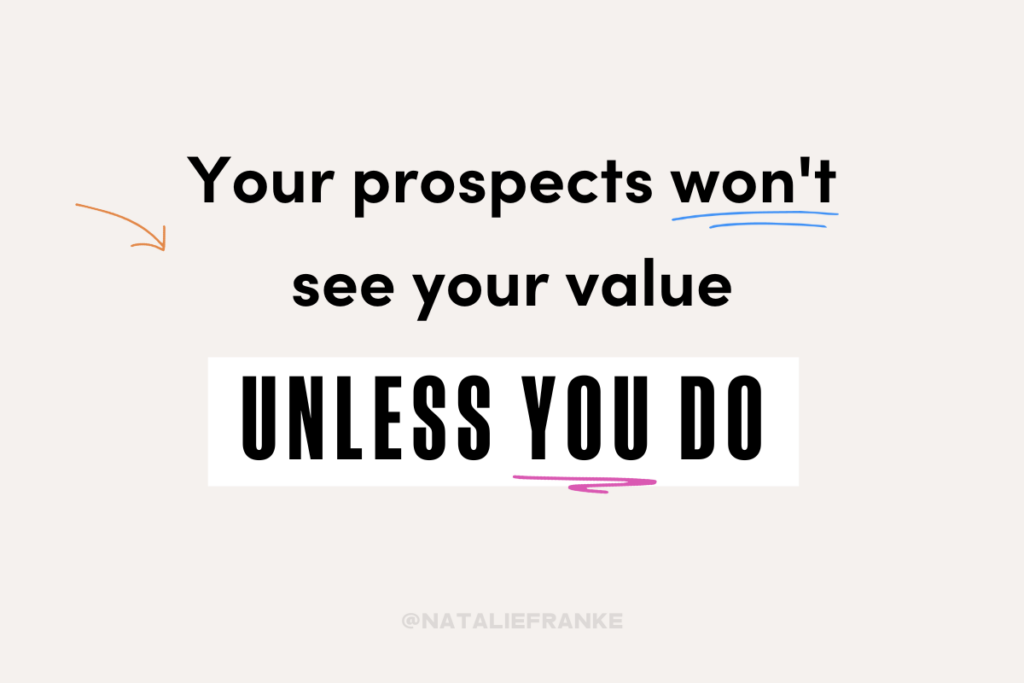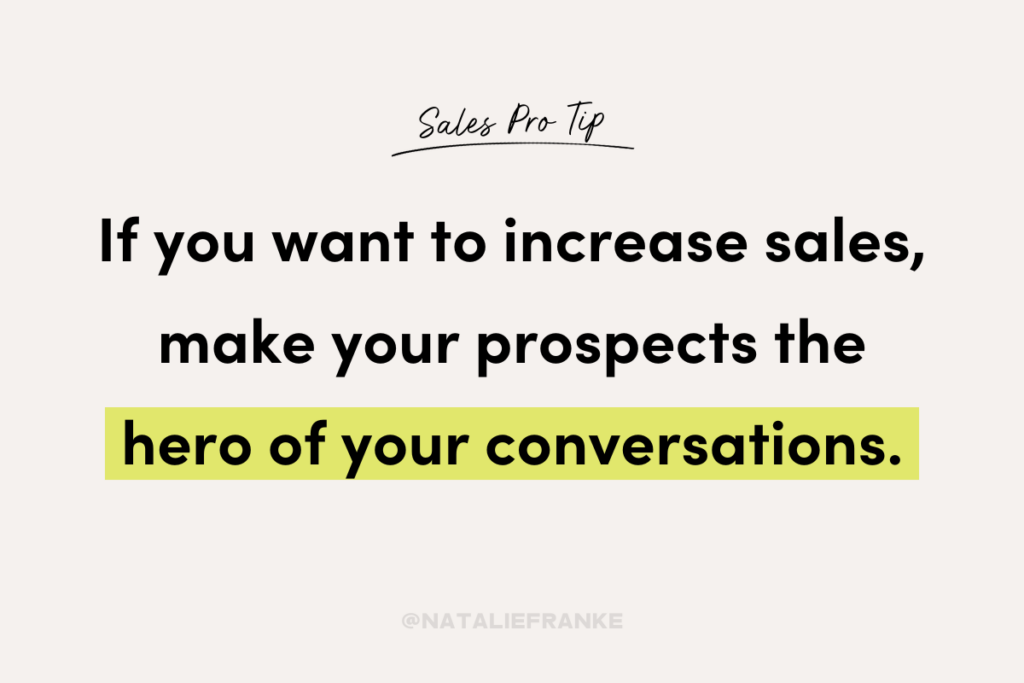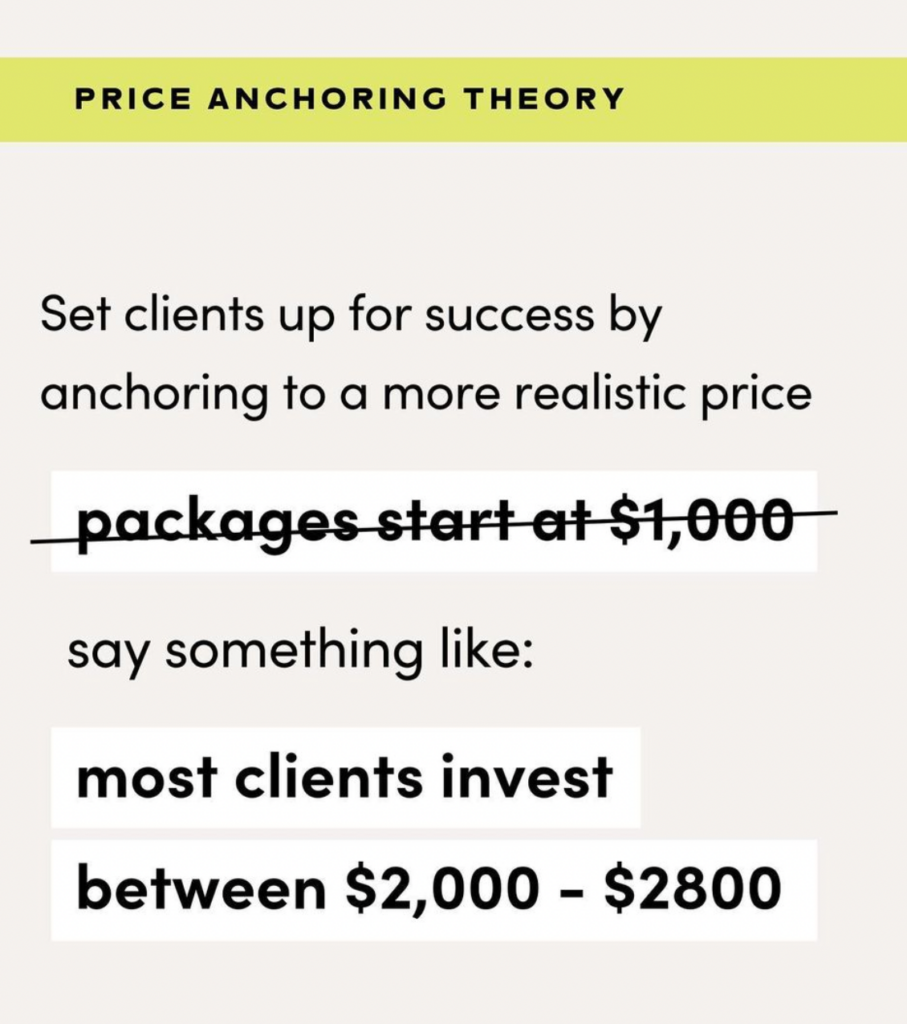How to feel more confident about your independent business pricing (+ examples)
June 7, 2023
This is one of the most common questions I hear when I talk to independent business owners and, to be honest, I get it.
When we price ourselves, we’re putting ourselves in the position to quantify the value we’re providing to others (experience, expertise, the craft of what we do) — and that is a playground our prickly little imposter syndrome gremlins to play on more than anything.
Do I really provide value?
If someone pushes back on my pricing, are they questioning my value?
Wait, are they right that I’m asking too much?
Is what I’m doing really even that special?
Am I even good enough to be charging these prices?
By a show of virtual hands, how many of you have caught yourself spiraling, trying to answer one, some, or all of the above questions? In case you’re wondering, my virtual hand is 100% raised right alongside you because, oof — pricing.
🔎 Related: 5 undeniable independent business trends you can’t ignore
Which is why we’re going to come together today and talk this out. Because I have no doubt that, no matter who you are, you do provide value. You’re not asking too much. Yes, what you’re doing is that special, because you are unique. And yes, you are good enough to charge your worth.
Now, let’s talk about how to make you feel that way, too.
Strengthen your pricing confidence muscles
OK, it’s time for a little tough love, but only because I care. I wish there was a fancy magic trick or “battle-tested†independent business process for building your confidence muscles around your pricing. I really, really do.
But here’s the truth:

No one, including your prospects, will see your value unless you do.
Really. It all begins with you and your mindset. You set the tone for how others perceive your value. If you don’t believe you possess value in the work you’re offering, no one else ever will. You have to believe in you if you want anyone else to do the same.
🔎 Related: Go behind the scenes of the Independent Business Podcast
Now, in all fairness, I know this is a lot easier said than done. Wouldn’t it be great if we could end this article right here, though? “Oh! All I have to do is BELIEVE IN MYSELF?! Why didn’t I think of that?!â€
Sigh, I wish. Trust me.
I know how hard it is to bet on yourself when you wish there was a little more proof in the proverbial pudding that betting on yourself is going to pay off. That’s exactly why I wrote my second book, Gutsy, which is coming out later this year.
If you’re waiting for others to give you the permission slip in life you need to do what you want to do on your terms, you’ll be waiting forever. And if you’re waiting for others to tell you the value you bring to this world, you’ll be waiting forever.
You have to do it scared.
Before you expect anyone else to validate what you offer, you have to start within you. You have to look in the mirror, know the value you bring to the table without needing the sign-off from anyone else, before you expect anyone else to follow suit.
🔎 Related: Gutsy, the 2nd book from Natalie Franke now available for preorder
The nuances of communicating value
One thing we must acknowledge is that assessing and quantifying “value†is subjective, and you can’t make assumptions that you and your potential clients have the same definition of “value.â€
So, when you’re leading the way in setting the tone for how prospects see your value, you need to get inside the mindset of your potential customers of how they assess and determine value when making purchasing decisions.
For example, one of the most common mistakes I see folks make in the wedding photography space is they publish content that interests other wedding photographers, but then wonder why they’re not attracting new clients. They’re creating content for themselves, for their community, and no one else.
🔎 Related: How to set client expectations in the instant gratification era
Potential wedding photography clients aren’t interested in gear. They don’t care if you’re photographing a dress with a $50,000 camera or a potato 🥔 as long as it looks stunning. They’re interested in how you make the days of your clients special; they’re interested in the process, the outcomes, what it’s like to work with you, and so on.
It doesn’t matter if we’re talking about marketing or sales conversations that include talking points about pricing, you have to contextualize everything you say and do around the priorities of your clients, not your own.
How do you do that?
Review old sales calls you’ve had with people who went on to become ideal clients and note the questions they ask you. Survey your clients (bonus, as part of your clientflow!) and ask them what about the process of working with you was magic for them, in their words.
Take the time to notice what it is that brought your clients to your doorstep and kept them happy throughout the process of working with you, and then integrate those learnings into how you approach conversations of your value.

Whenever you have a sales conversation about pricing or simply the work you do, make your prospects the hero of that conversation. Lead with their needs, goals, and challenges, not your own.
Also define who isn’t right for you
Here’s the thing, when you start within you, betting on yourself even when it’s scary at first, many people — well, more specifically, the right people — will catch the vision of your value, too.
But not everyone will, and that’s exactly how it’s supposed to be.
You aren’t meant to serve every single potential client you meet. I think this is something we all know intellectually. However, it’s easy to forget when we’re sitting with someone who is not the right fit for us, as they’re responding negatively to how we price our services.
🔎 Related: Why you keep attracting bad clients (+ how to fix it)
You may have a clear picture of what your value is, validated by your findings in gathering feedback from your current ideal clients. But the wrong person will never, ever, ever catch the vision of your value and will be more prone to pushing back on pricing.
Not because you’re doing anything wrong; they’re simply a bad-fit client.
That’s why I love to encourage independent business owners to not only take time to define who their ideal clients are, but also to define with the same exacting detail who isn’t right for them.
Because, sometimes you can have two prospects who look nearly identical “on paper,†but there could be a lack of alignment in values. Maybe they don’t share the same reverence for the craft behind the work you do, which is their prerogative! Maybe they’re a shopper who always prioritizes price as the determining factor, no matter what they’re buying, which is also totally OK!
Whatever the differences may be, they are not a reflection on you. But it’s on you to take the time to note what those differences are, so that when the wrong people come a-knockin’, your self-esteem doesn’t take a beating, and you know to walk away (politely) from the prospect.
For example, if can’t accommodate a prospect’s request for a very limited budget based on your current pricing, here is one of my favorite scripts:
“I am honored that you love my work. Unfortunately, due to the scope of the project and the budget allotted, I won’t be able to provide you with the experience that you are looking for. Let me recommend a few other businesses that are more competitively priced.â€
Know your worth, and don’t bend for those who aren’t meant for you.
🔎 Related: How to respond when someone asks you to work for a discount (+ examples)
How you talk about pricing matters
OK, now we’re going to dig into a bit of handy psychology that can make all the difference in how prospects perceive your pricing — whether they’re evaluating your pricing on your website during the ever-important research phase, or during a live sales conversation with you.
Commonly, independent business owners will talk about pricing on their website with language like this:
“Our packages typically start at $5,000.â€
Now, your packages may start at $5,000 but go up to $12,000 depending on a number of different factors. But since you may be worried about scaring folks off with that high of a number without being able to talk to them about what those factors are and how they influence pricing, you may leave that part out.
🎧 Independent Business Podcast: How to grow your business in a recession with Donald Miller
You shouldn’t do this.
There’s a principle in sales called “price anchoring,†which is when you give potential buyers a price point they can refer to when they make decisions.
When you say your prices start at a particular number — the very low end of a range, potentially — you are anchoring your prospects psychologically to that number. When your prices start at a particular number, anything less than that feels like a bargain. Anything more than that, however, feels too expensive. It’s a steeper climb to get that price up to where it needs to be — you have to make the case for it.
So, what should you do instead?

When you take this approach of saying “clients invest between X and Y,†you mitigate the risk of prospects experiencing sticker shock. On top of that, you’re positioning your work and what you do as an investment, not a transactional commodity that can be priced down like a car at a dealership.
Seriously, this seems like a small thing, but the psychology of how you frame pricing is much more powerful than you may realize.
Here’s another example. When you use whole numbers for your pricing — rather than anything with 99 at the end of it — you’re positioning your offerings in a way that is more attractive to buyers who spend more, because they’re not searching for the “best deal,†they want quality from a vendor who knows their worth.
“But what if I couldn’t afford my own services?â€
I hear this a lot, and I have two words for you:
That’s OK.
Really, it’s totally OK that you’ve priced yourself out of being able to afford you. You’re allowed to only be accessible to a certain level of clientele above where you perceive yourself to be, wealth-wise.
🍯 From HoneyBook: 15 pricing models for independent businesses
I struggled with this when I first started my wedding photography business in Annapolis. I couldn’t afford the way I wanted to price myself, and that held me back a bit at first. I would show up with “packages that start at $3,999,†and the luxury wedding photography client I wanted to book wouldn’t bite.
Depending on what it is you do or sell, this may resonate with you or it may not. But if it does, hear me when I say this: Just because you can’t afford your own services doesn’t mean you aren’t a luxury.
You absolutely are.
Don’t let fear hold you back
So much of what it takes to feel confident about your pricing simply comes down to your mindset. It comes down to moving through the fear, the what-ifs, and the naysayers who will never be on your side, to know and stand by your worth.
I know it’s not easy. In many ways, it’s a lifelong process of learning and believing and growing in the confidence we have for ourselves. But the only way I’ve ever learned to overcome these insecurities is by showing up and taking action even if I’m still learning to trust that I am truly enough.
🔎 Related: How will AI and ChatGPT impact your independent business?
You’re a human being, so fear is always going to be part of the equation, no matter how much experience you have or how much success you’ve achieved in your career. At some point, though, you have the choice as to whether you let fear be the thing that holds you back — or let it be what fuels you to move forward.
We’re not asking ourselves, “How do I become someone who walks through walls completely unphased, knowing I’m worth a billion dollars no matter what anyone else ever says about me?â€
What you need to ask yourself instead is:
- “How do I show up every single day with an understanding of the real value I provide?â€
- “How do I continue to improve myself and what I do every single day, so I can become more of an invaluable resource to my clients?â€
- “How do I price myself in such a way where I can give my clients the focus they deserve and the quality of work I’ve promised, without overextending myself to make ends meet?â€
Of course, you won’t be perfect at this.
You’ll have days where it’s harder to embody the confidence you know you need. You’ll make mistakes. You’ll learn. You’ll grow.
It’s why “do it scared†is one of my favorite mantras.
You’ll have bad days, you’ll have good days, but you’ll still always be moving forward. Staying and sitting in your insecurities isn’t going to get you where you want to go.
Know your worth. Charge your worth. Move forward. You’ve got this.
Leave a Reply Cancel reply
© 2023 Natalie Franke
/
/
/
/
/